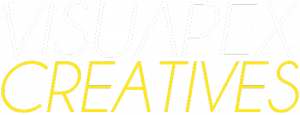Defining What is Graphic Designing
Graphic design is a creative and professional field that encompasses a range of visual techniques to communicate ideas and solve problems. What is graphic design can be understood as the practice of combining text, images, and visual elements to convey a message effectively. It touches various aspects, from branding and advertising to web and digital design, making it essential in nearly every industry today.
Graphic design’s history dates back to the early 20th century with movements like Bauhaus, which emphasized the synergy between form and function. Today, the field continues to evolve, adapting to digital advances and incorporating tools
and techniques that make the process accessible and impactful. Understanding graphic design basics and what is graphic designing can empower
individuals to make informed design decisions, whether they’re creating for a
brand, project, or personal expression.
● Blending Art and Technology: Graphic design combines artistic
expression with technical skills.
● Versatility Across Mediums: From print to digital, design adapts
to multiple formats.
● Core of Visual Communication: It serves as the bridge between
ideas and audience perception
● Foundational for Branding: Graphic design builds visual
identity for brands.
● Essential for Marketing Success: Quality design improves engagement
in advertising.
● Driven by Creativity and Strategy: Effective designs mix creativity
with strategic thinking.
Foundations of Graphic Design
To truly grasp what is graphic design, understanding the fundamentals of design
is essential. These basics encompass principles such as balance, alignment,
contrast, hierarchy, and proximity, which help designers organize elements in a
way that is visually appealing and communicative. A well-rounded knowledge of design fundamentals not only aids in creating aesthetically pleasing visuals but also strengthens the impact of the
message conveyed.
The fundamentals of graphic design are the building blocks of every project, ensuring designs achieve harmony, readability, and engagement. For example, balance provides visual stability, while contrast draws attention to focal points. A deep understanding of these principles is crucial for beginners to progress from creating basic layouts to more complex, impactful designs.
Core Fundamentals of Design:
Developing a successful hashtag strategy involves understanding your audience, campaign goals, and the platforms where you’re active.
● Balance: Ensures stability and structure within design layouts.
● Contrast: Highlights differences, emphasizing important elements.
● Alignment: Creates order and organization, leading to visual coherence.
● Hierarchy: Directs viewer attention to primary and secondary points.
● Proximity: Groups related items, enhancing clarity and cohesion.
● Repetition: Reinforces elements and adds unity across designs.
The Role of Typography and Color Theory in Effective Branding
Typography and color theory are pivotal elements in what is graphic design, significantly influencing brand perception. The role of typography and color theory in effective branding goes beyond aesthetics; they shape the emotional and psychological impact of a brand on its audience. Typography affects readability
and personality, while color evokes emotions and can drive consumer behavior.
For instance, bold, sans-serif fonts often convey modernity and reliability, making
them ideal for tech brands, while classic serif fonts evoke tradition, fitting
heritage brands. Likewise, color choices like blue can convey trust, while red
signifies urgency or passion. These choices align with brand messaging and
enhance brand recall, making them essential tools for designers.
Key Concepts in Typography and Color Theory:
● Typography as a Voice: Fonts convey personality, from playful to serious.
● Impact of Font Hierarchy: Guides the reader’s eye and establishes importance.
● Psychology of Colors: Each color evokes specific emotions and associations.
● Color Consistency: Reinforces brand identity across materials.
● Font Pairing: Combines fonts to add variety while maintaining harmony.
● Color Schemes: Complementary, monochromatic, and analogous schemes enhance aesthetics.
For those new to the field, mastering graphic design basics is the first step. Learning what is graphic designing involves understanding simple design
elements, like shapes, lines, and textures, as well as fundamental principles
like layout and spacing. These basics of graphic design provide a foundation that helps designers create cohesive and visually appealing projects.
Beginners benefit from familiarizing themselves with user-friendly design tools such as Adobe Illustrator, Photoshop, and Canva. These platforms offer basic templates and tutorials that make learning enjoyable and manageable, allowing novices to experiment with different design elements while gradually improving their skills.
● Learning Design Theory: Basics like contrast and alignment
enhance design quality.
● Practicing with Shapes and Colors: Starting simple builds familiarity
with tools.
● Exploring Composition: Arranging elements for clear communication.
● Experimenting with Tools: Adobe Suite, Canva, and online resources.
● Studying Inspiration Sources: Examining successful designs for ideas.
● Building a Portfolio: Showcases progress and helps track skill improvement.
Typical services include brand identity design, which encompasses logos, typography, and color schemes. Web and user experience (UX) design focus on optimizing visuals for digital platforms. Agencies may also provide motion graphics and animations, adding dynamic elements to social media and online ads.
● Branding and Logo Design: Establishes identity and visual
language.
● Digital Ads and Social Media Graphics: Enhances online engagement.
● Print Media Design: Includes brochures, flyers, and business cards.
● Website and UX Design: Ensures functionality and visual
appeal.
● Motion Graphics and Animation: Adds interactivity and dynamic
visuals.
● Product Packaging Design: Creates memorable and practical
packaging.
Graphic design is integral to web marketing, creating visually engaging assets that capture audience attention and enhance brand messaging. A web marketing graphic designer works to ensure that every digital touchpoint is consistent and appealing. From banner examples to social media visuals, well-designed graphics increase click-through rates and overall engagement.
Designing for web marketing involves understanding platform specifications, optimizing images for faster load times, and creating graphics that stand out in crowded feeds. With the right design strategies, businesses can leverage visual content to drive traffic and foster brand loyalty in a competitive digital landscape.
● Banner Ads: Strategically placed for high visibility.
● Social Media Graphics: Eye-catching designs tailored to
each platform.
● Email Templates: Cohesive and attractive for effective communication.
● Infographics: Simplifies complex information, enhancing shareability.
● Consistent Branding Across Channels: Strengthens brand recognition.
● Optimized Images for Speed: Ensures faster page load times.
Imagery is a powerful component in what is graphic design, as it enhances storytelling, evokes emotions, and builds connections. Effective design imagery
can elevate a brand’s message, making it memorable and relatable. Selecting appropriate images that align with a brand’s identity is essential for creating a cohesive visual narrative.
High-quality imagery also supports readability and breaks up text, making content more digestible. In the era of social media, where visuals dominate, thoughtful use of images can significantly increase engagement rates and drive consumer interest.
● Emotionally Engaging: Establishes a connection with
viewers.
● Supports Brand Storytelling: Visuals that align with brand
messaging.
● Enhances Readability: Breaks up text-heavy content for
clarity.
● Drives Social Engagement: Essential for social media
marketing.
● Creates Visual Consistency: Reinforces brand identity.
● Adds Depth and Visual Appeal: Elevates the overall design quality.
Digital graphic design has transformed the industry, allowing for a faster and more flexible creative process. With tools like Adobe Creative Cloud and online platforms, designers can produce professional-quality graphics quickly and efficiently. An introduction to graphic design in the digital realm includes mastering software, understanding file formats, and learning techniques for
responsive design.
Digital design also provides access to a vast array of resources, from stock images to advanced filters, enabling designers to explore creative ideas. As technology
evolves, digital tools continue to open new possibilities, making design more
accessible to professionals and beginners alike.
Benefits of Digital Tools in Graphic Design:
● Increased Efficiency: Speeds up the design process.
● Cloud-Based Collaboration: Enables real-time teamwork.
● Access to Vast Resources: Stock images, icons, and templates.
● Responsive Design Capabilities: Ensures compatibility across
devices.
● Streamlined Revisions: Easy to make changes and updates.
● Enhanced Creativity with Filters and Effects: Allows experimentation.



